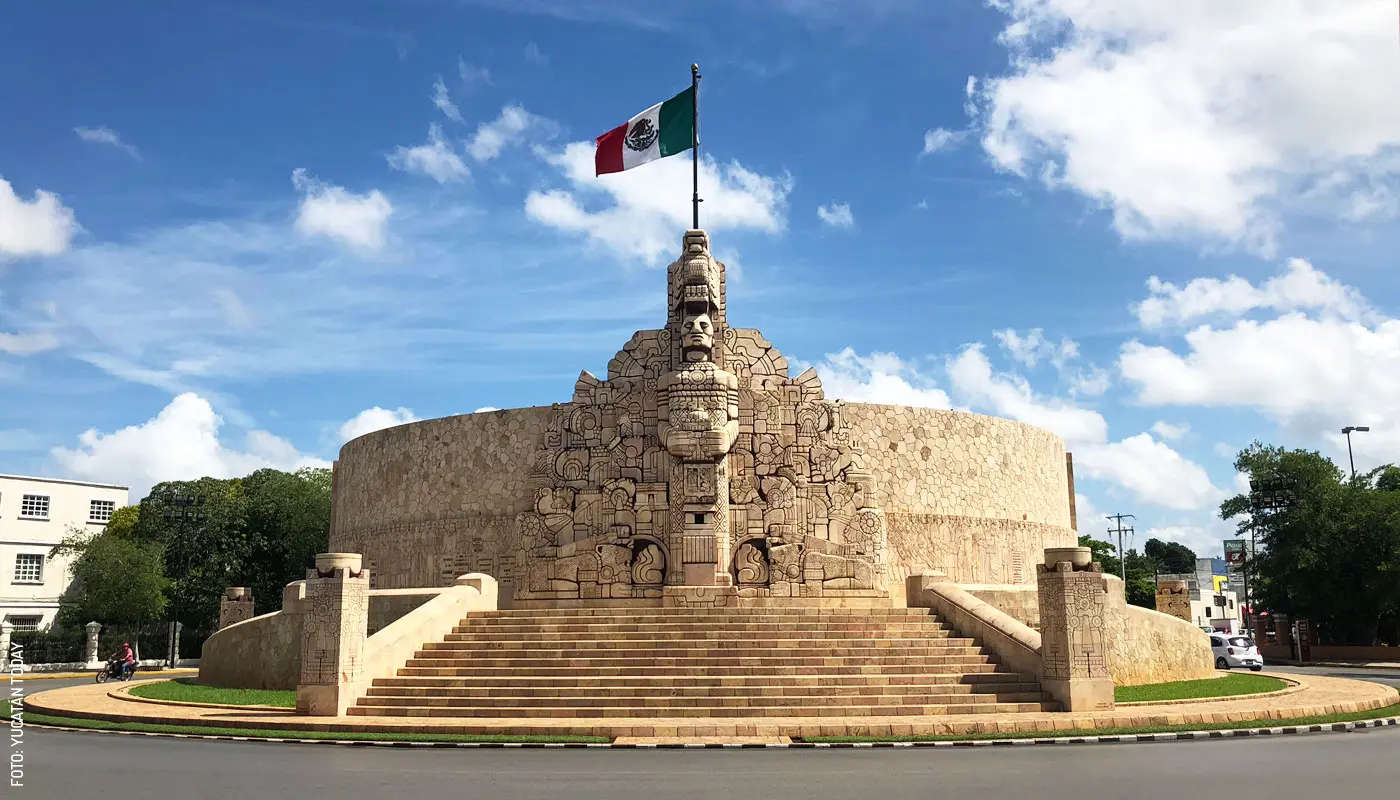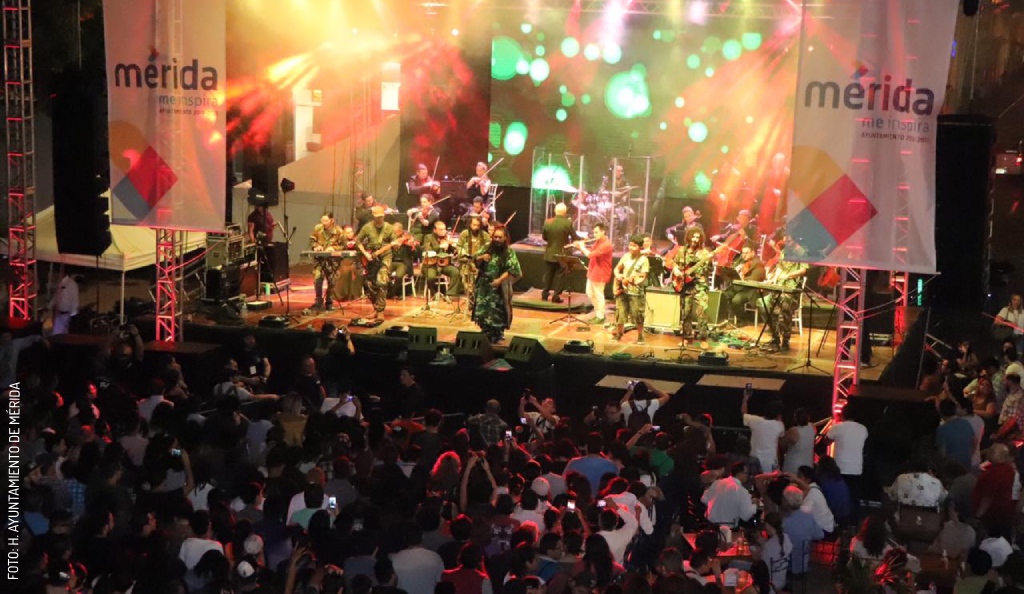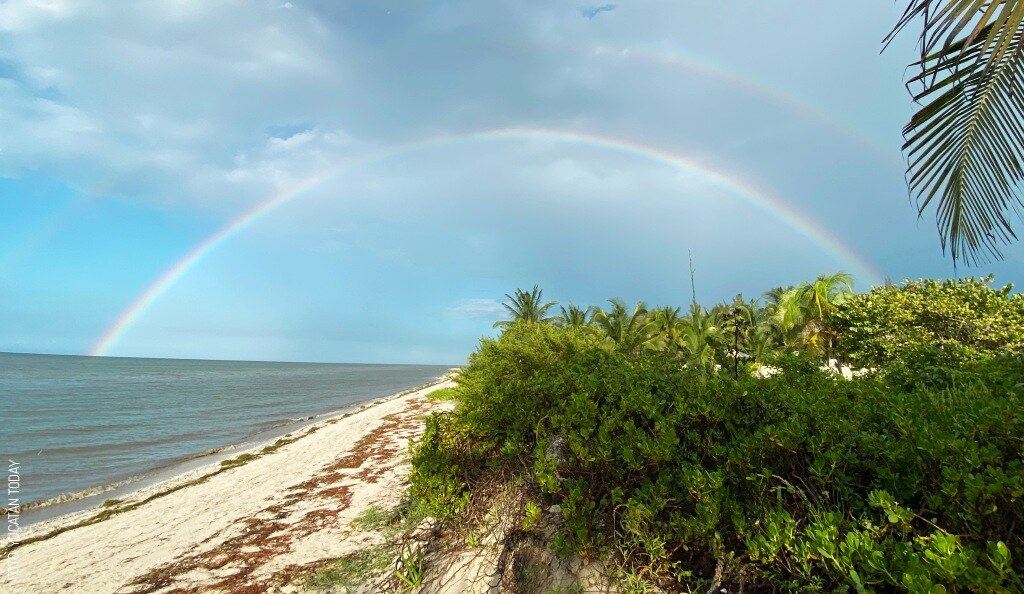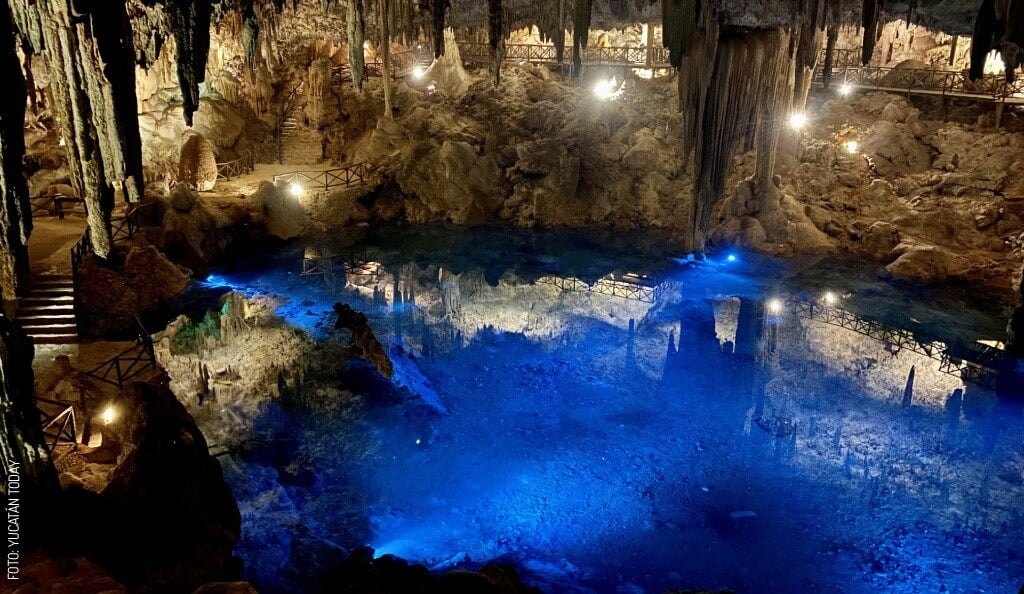Sobre Mérida
Mérida, una ciudad de más de 1 millón de habitantes, es una estupenda mezcla de una ciudad colonial y un destino cosmopolita. Con Mérida como tu base, puedes visitar catedrales e iglesias, sitios arqueológicos mayas, museos, haciendas y cenotes. También encontrarás cines, teatros, hospitales importantes, escuelas públicas y privadas, universidades, centros comerciales con grandes cadenas y franquicias como Sam’s, Costco, WalMart, así como franquicias mexicanas como Liverpool, Comercial Mexicana, Soriana y Sanborn' s.

Historia de Mérida
El español Francisco de Montejo «El Mozo» fundó Mérida el 6 de enero de 1542. Cuando los españoles llegaron, Mérida era una gran ciudad Maya conocida como T’ho, situada donde está ahora la Plaza Principal. Fue conquistada por españoles, quienes desmantelaron todas las pirámides y utilizaron grandes piedras para los cimientos de la Catedral de San Ildefonso (1556-1599), la Catedral más antigua sobre el continente americano.
La Catedral, situada en la parte este de la plaza, es sólo uno de los lugares más interesantes de Mérida. Directamente enfrente de la plaza está el Palacio Municipal (1735), el ayuntamiento de Mérida. En la parte sur está la Casa de Montejo (1542), la antigua casa del conquistador de Yucatán. El Palacio de Gobierno (1892), en el lado norte, es casa de 27 murales de Fernando Castro Pacheco ilustrando la violenta historia de Yucatán.
Una de las mayores influencias en la historia Yucateca es la de la planta de henequén, también llamada sisal (por la ciudad Yucateca de Sisal de donde salían los cargamentos del continente). Esta planta se convirtió en el «oro verde» por la riqueza que producía en las haciendas en esta área. Al principio del siglo XX, como resultado del comercio de henequén o sisal, Mérida era hogar de numerosos millonarios quienes construían sus ricos hogares sobre Paseo de Montejo, y sus impresionantes haciendas esparcidas por la jungla en los alrededores de Mérida.
Es una fabulosa forma de descubrir algunas de estas mansiones, muchas de las cuales han sido completamente restauradas, y algunas cuyo romántico decaimiento son comida para la imaginación.
Por siglos, la geografía le hizo difícil a los yucatecos comunicarse con el resto de México. Como resultado, influencias arquitectónicas y culturales de Europa, el Caribe y Nueva Orleans fueron tan fuertes o más fuertes en el crecimiento de la ciudad. Hasta el día de hoy, las personas que habitan aquí se consideran yucatecos primero, y mexicanos después. Si observas con atención, encontrarás playeras con calcomanías de Orgullosamente Yucateco.
Yucatán es uno de los estados más tranquilos y seguros de México, con un clima parecido al de Florida o Cuba. Los yucatecos son buenos, tranquilos, hospitalarios y tienen fuertes raíces y tradiciones. Ellos toman con orgullo su ciudad, conocida como «La Ciudad Blanca», no sólo por la predominancia de la piedra caliza como material de construcción, sino también porque sus calles, plazas y parques son limpiados todos los días.
Por su tranquilidad y limpieza, Mérida se ha convertido en un lugar famoso para las familias de otros estados mexicanos. Muchas personas se han mudado de la Ciudad de México, donde el crimen, la contaminación y la sobrepoblación son problemas siempre crecientes. El crimen no es tolerado en Mérida, tiene su distinción de la ciudad con el porcentaje de crimen por cápita más bajo en México.
Tour gratuito del centro de Mérida
Recorridos guiados gratuitos del Centro Histórico de la Ciudad de Mérida están disponibles de lunes a sábado a las 9:30 am. Llama al (999) 928 2020 ext. 833 o ve directo a la Oficina de Turismo en los bajos del Palacio Municipal (esquina de la calle 61 y calle 60).
Yucatán Today - La Biblia del Viajero
¡Puedes encontrar el Recorrido Gratuito por Centro Histórico de Mérida en nuestra sección de Eventos!
Qué hacer en Mérida:
Lunes
Vaquería Regional en frente del Palacio Municipal 9 pm.
Martes
Martes de Trova con musica romántica muy yucateca en el auditorio del Centro Cultural Olimpo a las 8 pm.
Remembranzas musicales: Música de las grandes bandas de los años 40 's, Parque de Santiago, Calle 59 por 72 a las 8:30 pm.
Miércoles
Video mapping Diálogos del Conquistador frente a la Casa de Montejo, 8 pm en la Plaza Grande.
Jueves
Jueves de Serenata en el Parque de Santa Lucía, Calle 60 por 55. 9 pm.
Corazón de Mérida: Calle 60 cerrada de la Plaza Grande hasta Calle 55. Música y bailes. 9 pm a 1 am.
Viernes
Video mapping Piedras Sagradas sobre la catedral San Ildefonso, calle 60 por 61. 8 pm.
Sábado
Noche Mexicana en el remate del Paseo de Montejo y calle 47 a las 8 pm.
Pok Ta Pok: representación del juego de pelota maya frente a la catedral San Ildefonso, calle 60 por 61. 8 pm.
Domingo
Mérida en Domingo: Mercado abierto, conciertos llenan el centro de la ciudad con una atmósfera de ensueño, de 9 am a 9 pm.
Corazón de Mérida: Calle 60 cerrada de la Plaza Grande hasta la Calle 55. Música y bailes. 9 pm – 1 am.
Biciruta: Paseo por calles cerradas desde el Monumento a la Patria hasta La Ermita de 8 am a 12 pm.
Cómo llegar a Mérida
El código del aeropuerto internacional Manuel Crescencio Rejón es MID. Tenemos vuelos a través de United Airlines, Aeromexico, Interjet, Volaris, Vivaaerobus, Aeromar, American Airlines, Blue Panorama Airlines, Magnicharters, Mayair, TAR, Tropic Air, Westjet y Delta Airlines. También tenemos excelentes conexiones en líneas de autobús.
Mérida tiene un lugar para descansar para cada presupuesto, hostales, hoteles pequeños con desayuno incluido y hoteles de todas categorías. Visite nuestra lista de hospedaje para mayor información.
Puedes encontrar casi todo tipo de alimento cuando vienes a Yucatán. Y ciertamente podrás encontrar muchas cosas que nunca habías oído antes. Visita nuestra lista de restaurantes para mayor información.
Artículos relacionados

Qué hacer en Yucatán en mayo

Estancia de Siete Días: Mérida, Uxmal, Motul, Telchac Puerto




